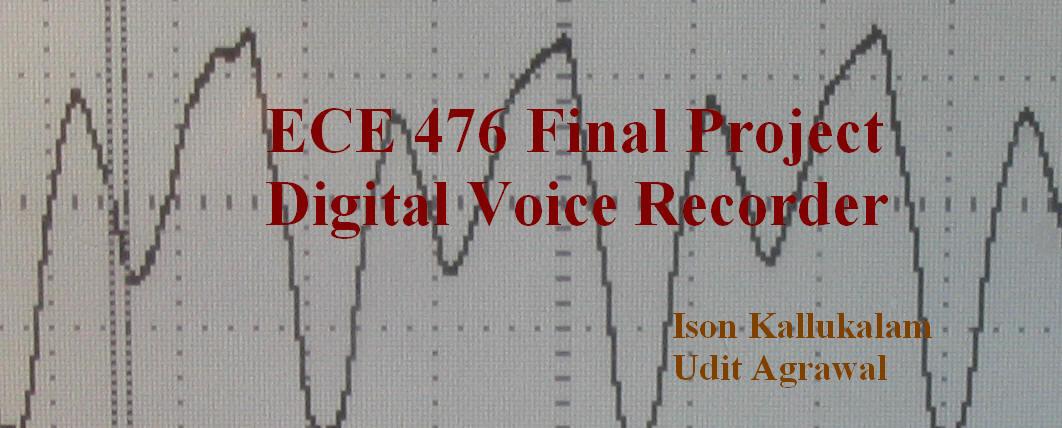|
Results
Design Speed and
timing
Timing was
a very important aspect of our design since we have to play back the
sample at the same frequency as you read it. Even though we had some
trouble with writing samples to buffer and from buffer to memory within
one sample period we quickly fixed it by editing the dataflash.c file to
ignore error checking and thus speeding up the process. Since buffers
were situated inside the chip it wasnít blocking to write from buffer to
memory unlike SD card which didnít have any on chip buffers.
Accuracy
While
sampling at higher frequencies above 12kHz the playback speed was
slightly faster than the recording frequency (This wasnít a problem at
8kHz).This can be adjusted by using a different larger OCR0 value for
play back interrupt. We used this phenomenon to our advantage to have a
cool feature to playback at faster or slower frequencies by changing
OCR0 while playback by a button press.
For our
playback logic we first had a DAC with PWM output of the samples and we
passed it through a chebyshev filter to generate the playback signal for
the TV speaker. This signal wasnít that accurate. We ended up using a
resister ladder network DAC which was much clearer and accurate than the
PWM DAC.
Whenever
we tested a new scheme like ADPCM or different variations of Down
Sampling we used our ears to measure the accuracy of the sound and chose
the best one.
Safety
Safety
wasnít a big concern for this project since we didnít have anything that
hooked up to human body and the maximum voltage we used was +5V. You can
even lick it and both you and the product will still work. Not
recommended for children under 4 since they may eat the microphone and
choke and subsequently die.
Interference
The only
interference we had was the 60Hz noise. We shielded our circuit with a
grounded metal sheet and used a high pass filter to reduce its effects.
The ambient noise in the room was also a problem which we couldnít do
anything about.
Usability
Our voice
recorder was a very simple device. It has an LCD that shows which track
you are write into or playing from. There are four simple buttons one
for recording, one for playing and the other two for navigating through
tracks. The two buttons used to navigate through track is also used to
make cool effects during playback and they will work only during
playback so there wonít be any confusion. Anybody who has operated an
answering machine could operate our device.
|



